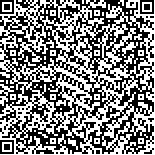董军涛,郑修元,林阳阳,燕铁斌,何晓阔,赵敬璞,录欣欣.不同形式的运动训练对血管性痴呆大鼠学习记忆及前额叶皮质区突触素及突触后致密物-95表达的影响[J].中华物理医学与康复杂志,2015,37(9):641-645
扫码阅读全文

|
| 不同形式的运动训练对血管性痴呆大鼠学习记忆及前额叶皮质区突触素及突触后致密物-95表达的影响 |
|
| |
| DOI: |
| 中文关键词: 血管性痴呆 运动训练 学习记忆 突触素 突触后致密物-95 |
| 英文关键词: Vascular dementia Exercise Learning Memory Synaptophysin Postsynaptic density protein 95 |
| 基金项目:国家自然科学基金资助项目(81171863) |
|
| 摘要点击次数: 2057 |
| 全文下载次数: 2959 |
| 中文摘要: |
| 目的 研究不同形式的运动训练(自主运动、强迫运动和功能性电刺激诱导的运动)对血管性痴呆(VD)大鼠学习记忆功能的恢复及前额叶皮质区突触素(SYP)、突触后致密物-95(PSD-95)表达的影响。 方法 选择Wistar雄性大鼠40只,按随机数字表法分为模型组、假手术组、自主运动组、强迫运动组和功能性电刺激组,每组8只。采用双侧颈总动脉永久性结扎的方法制作VD模型,假手术组大鼠麻醉但不阻断颈总动脉。造模成功1周后,自主运动组大鼠在跑轮上自由运动,每日270m;强迫运动组在电动跑轮上行强迫运动,每日270m;功能性电刺激组采用功能性电刺激模拟大鼠前肢在跑轮上行走时的动作,按9m/min的速度每日运动3次,每次10min;模型组和假手术组造模成功后置于笼中自由活动。5组大鼠均于造模成功3周后,采用新奇事物识别实验测试大鼠学习记忆能力,测试后即刻取大鼠前额叶皮质采用Western blot技术检测上述各组突触素、突触后致密物-95的表达。 结果 自主运动组、强迫运动组和功能性电刺激组大鼠新奇事物认知指数分别为(0.65±0.15)、(0.59±0.12)和(0.62±0.14),较模型组的(0.45±0.13)均有明显升高,且差异有统计学意义(P<0.05)。自主运动组、强迫运动组和功能性电刺激组大鼠前额叶皮质区PSD-95表达水平分别为(1.01±0.05)、(0.95±0.15)和(1.06±0.09),较模型组的(0.58±0.15)均有明显升高,差异有统计学意义(P<0.05)。 结论 自主运动、强迫运动和功能性电刺激诱导的运动均可改善VD大鼠的学习记忆能力,其可能机制是自主运动、强迫运动和功能性电刺激诱导的运动均可促进前额叶皮质区突触后致密物-95的表达,但对突触素的表达影响不大。 |
| 英文摘要: |
| Objective To study the effects of different types of exercise training on learning and memory, as well as on the expression of synaptophysin (SYP) and on postsynaptic density protein 95 (PSD-95) in rats in which a model of vascular dementia had been created. Methods Forty male Wistar rats were divided randomly into a voluntary exercise group (V-EX), a forced exercise group (F-EX), an involuntary exercise group (I-EX), a vascular dementia group (VD) and a sham-operation group (Sham), with 8 rats in each group. Two-vessel occlusion (2-VO) of the arteria carotis communis was used to create a model of vascular dementia in all of the rats except those in the sham-operation group. Beginning one week after the surgery, the V-Ex rats were free to run in a running wheel. The F-EX rats were forced to run 270 m a day in an electric wheel. The I-EX rats were stimulated to imitate the gait pattern of their forelimbs running at 9 m/min three times a day for 10 minutes each time. No special training was given to the rats in the other 2 groups. Three weeks after the surgery, their learning and memory were tested using a novel object recognition test. Immediately after the test, their prefrontal cortex was sampled and the expression of SYP and PSD-95 was detected using western blotting. Results The average novel object recognition indices of the rats in the V-EX, F-EX and I-EX groups were all significantly higher than that of the VD group. Average PSD-95 expression was also significantly higher than in the VD group. Conclusion Exercise, whether voluntary, forced or induced by functional electrical stimulation can improve learning and memory in vascular dementia, at least in rats. The mechanism is possibly that the training can increase the expression of PSD-95 in the prefrontal cortex, though not SYP. |
|
查看全文
查看/发表评论 下载PDF阅读器 |
| 关闭 |